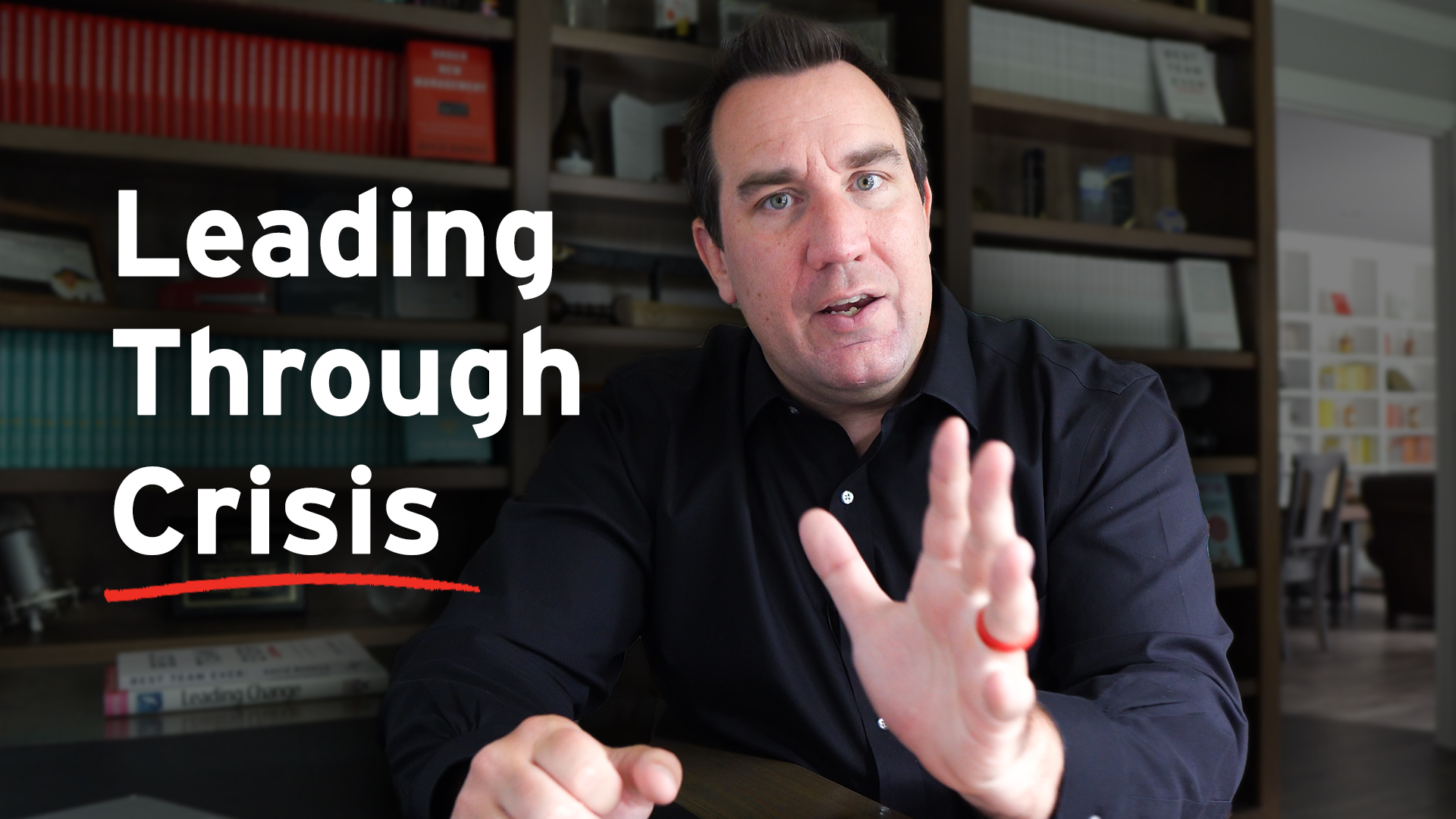
One of the biggest myths in leadership—especially when leading through uncertainty—is that strong leaders always appear rock-solid and unwavering. That they must exude confidence, provide a flawless roadmap, and convince everyone that the future is secure and under control. According to this myth, certainty equals strength, and any expression of doubt is a liability.
But here’s the truth: rigid confidence in a fragile plan is a recipe for disaster.
The act of planning is more important than any one plan. Why? Because when leading through uncertainty, no plan survives its first contact with reality. The philosopher Mike Tyson put it more bluntly: “Everybody has a plan until they get punched in the face.” Whether it’s a global crisis, an unexpected shift in the market, or internal organizational upheaval, uncertainty guarantees that what looked good on paper will eventually fall short.
The real job of leading through uncertainty isn’t about having the right answer in advance—it’s about building the capacity to learn, adapt, and course-correct as events unfold.
The False Confidence Temptation
It’s easy to see why the myth of the all-knowing, confident leader has endured. In high-stress situations, people crave clarity. They want someone to reassure them that everything will be okay. And leaders, sensing that pressure, often feel the need to perform certainty—even if they don’t feel it.
So, they commit early. They communicate loudly. And then when facts change—as they always do in uncertain times—they feel trapped. Trapped by the story they’ve already told. Trapped by the perception of strength they feel compelled to maintain. As a result, they stick to plans that no longer work, hoping their authority will carry the day.
Meanwhile, their teams are watching—and not just watching decisions. They’re watching adaptability. And when leaders don’t adapt, trust begins to erode.
Why False Confidence Fails
Uncertainty exposes the flaws in static leadership. When leaders cling to their original plans, they send an implicit message: “I’m more committed to being right than I am to doing what’s right.”
That mindset doesn’t just limit a leader’s effectiveness—it damages the team’s morale. Employees begin to withhold concerns or ideas because they believe the direction is locked in. They stop offering feedback, stop speaking up, and start disengaging.
Even worse, when a leader projects confidence without substance, it creates false security. Teams may charge forward based on outdated assumptions, only to find themselves caught unprepared when the landscape shifts. In these moments, the cost of inflexibility isn’t just lost opportunities—it’s lost credibility.
But the inverse is also true. When leaders are transparent about what they don’t know, and quick to adjust when new information arrives, they model something far more powerful: humility, agility, and resilience.
Embrace the Discomfort of Not Knowing
Leading through uncertainty begins with a mindset shift: from knowing to learning.
Satya Nadella, the CEO of Microsoft, put it best when he said leaders must move from being “know-it-alls” to “learn-it-alls.” That shift is more than clever. It’s essential. Because when uncertainty hits, your old playbook won’t cut it. The market changes. Customer needs evolve. What worked last quarter may not apply today.
If you’re stuck thinking “I’ve got this figured out,” you’re missing what the moment is trying to teach you.
Great leaders ask great questions: “What are we missing?” “What could go wrong?” “What does the team see that I don’t?” By doing so, they unlock insights that top-down planning alone can’t deliver.
Paradoxically, vulnerability builds trust. When leaders admit they don’t have all the answers, but they’re committed to finding better ones, teams respond with greater openness and creativity. They don’t need their leader to be infallible. They need their leader to be present, curious, and real.
Rehearse for Change, Don’t Just React to It
Uncertainty isn’t a rare event anymore. It’s the default setting.
And in this environment, the most successful leaders don’t just prepare for the known—they rehearse for the unknown.
Think of a quarterback. They don’t memorize a playbook and call it a day. They run drills for dozens of scenarios. They rehearse breakdowns, coverage changes, weather shifts—anything that might happen on game day. Why? Because in high-pressure moments, instinct takes over. Preparation becomes performance.
Leadership is no different. When faced with unexpected change, your ability to pivot comes from prior practice.
That’s why modern leaders rehearse for change. Not just Plan A, but Plans B, C, and D. And they do it with their teams. What if our biggest customer leaves? What if a key supplier goes dark? What if our product suddenly faces a new competitor?
These aren’t pessimistic questions. They’re practical ones. And talking through them isn’t fear-mongering—it’s building resilience.
When teams rehearse together, they’re better equipped to respond together. They know where to go, who needs support, and what priorities must shift. That shared preparedness builds confidence—not in the plan, but in the team’s ability to adapt.
Communicate Early, Often, and Honestly
In uncertain times, silence is dangerous. When leaders don’t communicate, teams don’t relax—they spiral.
The absence of information is rarely interpreted generously. If leaders don’t speak up, people start filling the void with their own assumptions. And human nature being what it is, those assumptions usually lean toward worst-case scenarios.
That’s why leaders must communicate promptly and transparently—even if they don’t have all the answers.
Transparency doesn’t mean having everything figured out. It means being clear about what you know, what you’re doing, and what you’re still working on. The message can be as simple as:
• “Here’s what’s happening.”
• “Here’s what we’re doing about it.”
• “Here’s what we need from you.”
This clarity transforms uncertainty from a threat into a shared challenge. It gives people agency. It builds trust. And it reinforces the most important message a team can hear: “We’re in this together.”
Model Adaptability, Not Perfection
When the world is unpredictable, your leading through uncertainty playbook should be built around adaptability—not perfection.
That means acknowledging when circumstances change. Updating your direction when new facts emerge. And giving your team permission to do the same. It’s not enough to say “we’re agile” in principle. You have to live it in practice.
And perhaps most importantly, you need to create space for your team to learn with you. Ask for input. Share lessons learned. Celebrate smart adjustments, even if they came after a mistake. The goal isn’t to be flawless—it’s to be flexible.
The Real Strength in Leading Through Uncertainty
If there’s one thing we’ve learned from recent years, it’s that the ground will keep shifting. There will always be new disruptions, new challenges, and new unknowns. But the best leaders don’t fear that reality. They prepare for it. They build cultures of learning, resilience, and trust. They lead not by pretending to have all the answers, but by modeling the pursuit of better ones.
Leading through uncertainty isn’t about being the one who always knows. It’s about being the one who always learns. It’s about modeling curiosity, building flexibility, and fostering trust.
Because the truth is, your team doesn’t need a hero with all the answers. They need a human who’s willing to listen, adapt, and learn alongside them.
That’s the kind of leadership that endures—even when the future doesn’t go according to plan.

About the author
David Burkus is an organizational psychologist, keynote speaker, and bestselling author of five books on leadership and teamwork.